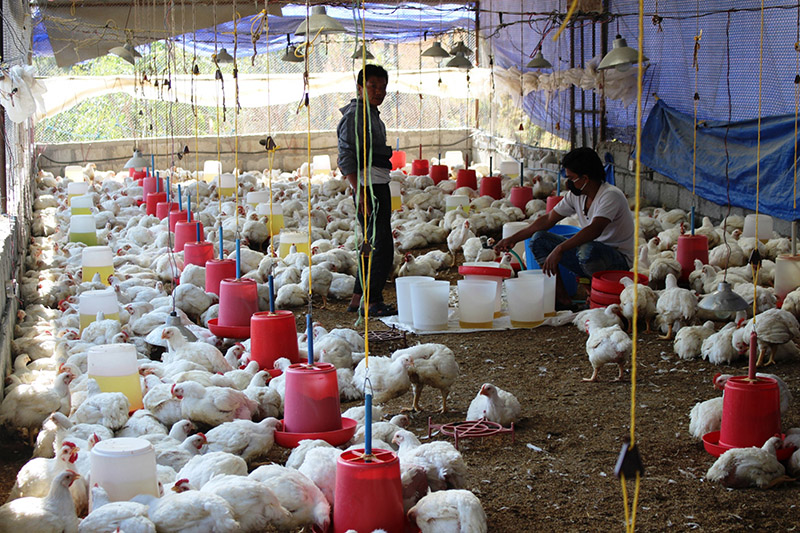Rise in death of H9-infected poultry in Chitwan
CHITWAN: The death of poultry due to infection from Low Pathogenic Avian Influenza H9 has increased in Chitwan district, which is also known as the poultry capital. A large number of chickens have died following the outbreak of infection caused by H9 virus, which was detected in the country in the beginning of February.
According to Chief of Bharatpur-based National Avian Disease Investigation Laboratory (NADIL), Dr Dayaram Chapagain, there is no confirmed statistics of how many fowls died from the infection, however, it is certain that around 40 per cent of the chickens have died in the district.
The poultry farming entrepreneurs have been hiding the data on the number of chickens that have died from the infection as the revelation could negatively influence the consumer market.
Following the detection of the H9 virus, large number of chickens have succumbed to viral, bacterial and micro-plasma infections. Dr Chapagain said, "After the infection, the birds lose appetite, there is reduction in the number of laid eggs by half, and the fatality rate exists at seven to eight per cent."
He further informed, "But now the fatality rate has increased due to the multi-infection caused by the H9 virus." He presumed that single infection of H9 could have lessened the fatality rate.
The sample collected by the NADIL, tested at the Teku-based Central Veterinary Laboratory in Kathmandu, has resulted positive for H9 virus. Dr Chapagain has urged the poultry farmers to take preventive measures. However, Dr Chapagain claimed that Highly Pathogenic Avian Influenza H5 (bird flu) virus has not been communicated in Nepal.
Director General at the Department of Livestock Services, Nepal, Dr Bimal Kumar Nirmal also claimed that fowls in Nepal have not suffered from bird flu yet. But with the outbreak of the disease in India near the Nepali border, high preventive measures have been taken in the districts — Rupandehi, Kapilvastu, Nawalparasi and Chitwan — adjoining the Indian borders.
A meeting of high-level technicians at the Department of Livestock Services, Nepal, in Kathmandu has decided to rigorously carry out monitoring led by under-secretaries in the districts under risk of H9 infection, from Friday.
Nepal Poultry Federation President Gunachandra Bista said that the H9 infection has caused huge loss due to lack of vaccination against the infection. Every year, Nepal suffers a loss of around Rs 1 billion from the H9 infection among the fowls.
Entrepreneurs have claimed that presently an investment of over Rs 70 billion has been made in the poultry farming sector in the country.






